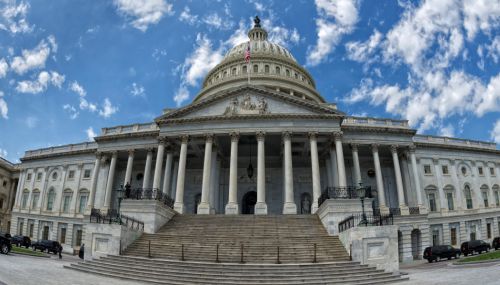Clean energy advocates say that solar and wind can meet an increasing share of the world’s electricity needs, but the technologies must attract sufficient capital to achieve widespread commercial scale production.
During a discussion at last week’s Forum 20/20 event in Boston entitled “Charting CleanTech’s Future,” four expert panelists shared their thoughts on the opportunities and challenges ahead. The event was sponsored by the Massachusetts Clean Energy Center.
Moderator Bill Aulet, Managing Director of Martin Trust Center for MIT Entrepreneurship, said bringing clean energy into the mainstream is “the challenge of our generation.” There are no easy solutions, but he is pleased by how much progress the industry has made.
Cheryl Martin, Acting Director of the U.S. Department of Energy’s (DOE) Advanced Research Projects Agency-Energy (ARPA-E) program, said clean energy has passed through its early “euphoric” times to a more balanced stage. The conversation about clean energy and the grid is dynamic and now involves the utilities themselves, who recognize that the old utility business model is under threat, she said.
ARPA-E provides funding to high-impact energy technologies that are too early for private-sector investment, including many clean energy pioneers, and Martin said that a lot of venture capital models don’t fit in the energy industry, so financial innovation is needed.
The panelists examined the role of state and federal policies in supporting clean energy technologies and suggested that the states have been better partners than the federal government. The DOE was crippled in 2011 by a scandal in which solar energy parts manufacturer Solyndra went bankrupt after receiving a $536 million DOE loan guarantee and a $25 million tax break from California.
John MacWilliams, Senior Advisor to the U.S. Secretary of Energy, said he was not surprised by the struggles of some clean energy firms. Clean energy’s trajectory reminds him of the biotech industry, which endured a succession of failures in the early going before gaining strength and being incorporated into big pharma.
The Solyndra scandal bedeviled DOE, according to MacWilliams, but clean energy is now at a tipping point, and DOE is coming out of its “defensive crouch.” He recently looked over the ARPA-E loan portfolio and was pleasantly surprised. “There were less than 2 percent loan losses,” he said. “It’s a portfolio that J.P. Morgan would be happy to hold.” While the loans look solid, MacWilliams pointed out that ARPA-E is not a commercial loan program, “It’s designed to take risks and be catalytic,” he added.
Paul Gaynor, CEO of First Wind, a Boston-based renewable power provider, said companies like his have to “pick their spots” to find supportive policymakers. First Wind is working with states like Massachusetts and Hawaii, where there is a commitment to advance renewable energy. “When you think about wind and solar subsidies, the conversation is anything but rational,” he said. “Our strategy is devoid of federal initiatives. It is all about the states. That is where the action is happening.” Providers like First Wind are bringing down the overall cost of the energy complex and selling lots of power to utilities, but members of Congress still talk about clean energy as a subsidized industry, Gaynor said.
DOE’s MacWilliams acknowledged that “democracy is messy” but said that commercial scale solar would not have advanced as far as it has without DOE’s support.
Aulet asked members what would move the needle more in the years ahead, technological innovation or business process improvements. Gaynor said technology has been the primary reason why renewable energy has taken off, because it has driven down the cost of purchased power. ARPA-E’s Martin said that better business models attract financing, which allows the next generation of technology to emerge. “Business models evolve, and people see how to make money,” she said.
Gaynor pointed out that institutional capital is starting to flow into clean energy, which is helping to bring down the cost of technology and production, which reduces the cost of delivered energy. “The amount of manufacturing in the U.S. has tripled in the wind space, and the cost of capital has come down,” he added. He predicted that the cost of commercial scale renewable power would continue to decline.
The country needs bold leadership that recognizes the many economic benefits of clean energy and is committed to capitalizing on opportunities, Gaynor said. First Wind is now limited to building incremental wind projects based on incremental policy. “I’m not complaining, but that doesn’t solve the problem. We need to go deep and big,” he added. The First Wind CEO said he hopes the next leaders of states like Massachusetts, Connecticut and Rhode Island will move aggressively on clean energy. “There is a great opportunity to save $1 billion a year in energy costs,” he said.
MacWilliams said that DOE is focused on reducing the cost of capital and increasing money flow into clean energy. “We can’t meet these challenges if we aren’t engaging the capital markets,” he said.
One of the biggest hurdles for an emerging clean energy company, according to ARPA-E’s Martin, is getting to the pilot plant stage, because capital needs can be in the tens of millions and the project is unlikely to make money in the near term.
There is a tremendous sense of urgency on climate change, according to MacWilliams. “Can we innovate fast enough and get the capital markets changed fast enough to deal with out goals on climate?” he asked. He said it is important to innovate with the installed base of fossil fuel generation too, not just the clean energy sources.




